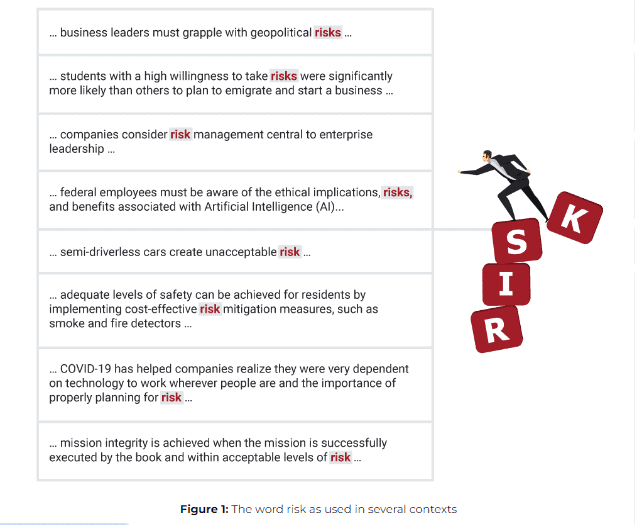ISO 31000 Risk Management – Training Courses
Risk is present in every aspect of our life, from mundane everyday activities such as choosing a route to work, to complex corporate decisions such as opening a manufacturing plant in a different country. Much effort was put over the past decades to better understand risk and its nature, which led to the creation of methodologies and approaches that enable individuals and organizations to make accurate decisions based on logical reasoning.
One of the most distinguished frameworks to address risk is provided by ISO 31000, an international standard that incorporates principles, proven practices, and guidelines on managing risks faced by organizations.

What is ISO 31000?
ISO 31000 is an international standard that provides guidelines on managing any type of risk in any business activity. The standard provides guidelines on principles, risk management framework, and application of the risk management process.
ISO 31000 is applicable to organizations of all types and sizes who seek to integrate risk management into business functions. It covers the risk management principles which are the foundation for managing risk, and guides organizations in developing a risk management framework by:
- Integrating risk management into organizational structures
- Designing a framework for managing risk that fits the organization’s context
- Implementing the risk management framework
- Evaluating the effectiveness and continually improve the suitability and adequacy of the risk management framework
- Demonstrating leadership and commitment (top management)
ISO 31000 considers the risk management process as an integral part of overall management and decision-making. The risk management process can be applied on a strategic level and organization-wide, but it can also be applied on projects, products, and processes. ISO 31000 provides guidelines on risk communication and consultation, defining of the scope, context, and criteria, risk assessment, risk treatment, monitoring and review, and lastly, recording and reporting of risks.
Why is ISO 31000 important for organizations?
Organizations performing in any industry in any place are constantly exposed to risks. Managing these risks based on the principles, framework, and process outlined in ISO 31000 provides a level of assurance that allows organizations to succeed and thrive in an environment of constant change. The implementation of ISO 31000 guidelines can improve operational efficiency by facilitating the integration of risk-based decision-making into governance, planning, management, reporting, policies, values, and culture of an organization.
ISO 31000 enables organizations to identify the potential risks that could hinder the achievement of business objectives. It will also help them to determine the significance of risks and decide which risks should be mitigated first in order to achieve the objectives before they affect the business, and effectively keep all other risks under control. In addition, ISO 31000’s best practices allow organizations to develop a desired risk management culture.
A risk management approach based on guidelines of ISO 31000 clearly indicates that organizations are committed to managing risks in every part of the business. It increases the public confidence among customers and other stakeholders as it demonstrates the organizations’ capabilities in mitigating internal and external threats. A risk management process based on ISO 31000 will enhance the reputation of an organization and give it a competitive advantage.
Why should you pursue a certification in ISO 31000?
An ISO 31000 certification demonstrates that you have the necessary competencies to support an organization in creating and protecting value. In addition, it shows that you are able to assist organizations in establishing a risk strategy, achieving strategic objectives, and making informed decisions.
Certification in ISO 31000 helps you:
- Distinguish yourself from other risk management professionals
- Demonstrate awareness of risk management principles and other underlying concepts of risk
- Demonstrate the competencies to establish a risk management framework that is tailored to the needs and context of an organization
- Show capability to apply the risk management process based on the recommendations of ISO 31000
- Show awareness of the importance of integrating risk management into significant activities and functions of an organization
- Have a more successful career in risk management
Why choose PECB?
As a global provider of training, examination, and certification services, PECB aims to help you demonstrate your commitment and competence by providing you valuable education, evaluation, and certification against internationally recognized standards.
Our ISO 31000 Risk Manager and ISO 31000 Lead Risk Manager certificates are accredited by IAS. The IAS Accreditation Mark provides additional value to the certificate and allows you to capitalize on the worldwide recognition that IAS holds.
How do I get started?
We at PECB are excited to welcome you to our global network. We will assist you throughout the entire process in order to offer you a worthwhile experience.
PECB Certified ISO 31000 Training Courses Available
Enhance your knowledge on risk management and create new career opportunities by participating in our ISO 31000 training courses
Why should you attend?
ISO 31000 Introduction training course enables you to comprehend the basic concepts of Risk Management.
By attending the ISO 31000 Introduction course, you will understand the importance of Risk Management and the benefits that businesses, society and governments can obtain.
Who should attend?
- Individuals interested in Risk Management
- Individuals aspiring to gain knowledge about the main processes of Risk Management
Learning objectives
- Understand the concepts, approaches, methods, and techniques used to manage risk
- Understand the basic processes of Risk Management
Prerequisites
None
Course Agenda
Day 1: Introduction to Risk Management based on ISO 31000 principles and guidelines
General Information
- Training material containing over 100 pages of information and practical examples will be distributed
- An attestation of course completion worth 7 CPD (Continuing Professional Development) credits will be issued to the participants who have attended the training course.
Why should you attend?
The ISO 31000 Foundation training course presents the basic principles and approaches of managing risks and opportunities based on the guidelines of ISO 31000. This training course focuses on the main components of ISO 31000: basic terms and definitions, principles of risk management, risk management framework, and risk management process. In addition, each step of the risk management process is analyzed and elaborated individually.
Upon completion of the training course, you can sit for the exam and apply to obtain the “PECB Certificate Holder in ISO 31000 Foundation” designation. The certificate demonstrates that you understand the fundamental concepts of risk and methodologies for risk management based on the guidelines of ISO 31000.
Who should attend?
- Risk management professionals
- Individuals seeking to gain knowledge about the ISO 31000 guidelines for risk management principles, framework, and process
- Individuals responsible for the creation and protection of value in an organization
- Personnel tasked with managing the risks and opportunities in their area of responsibility
- Individuals interested to pursue a career as a risk manager
Learning objectives
Upon successful completion of this training course, the participants will be able to:
- Summarize the main concepts and principles of risk management as articulated in ISO 31000
- Explain the ISO 31000 guidelines for establishing the risk management framework
- Describe the application of the risk management process in accordance with ISO 31000 guidelines
Educational approach
The training course is participant centered and contains:
- Lecture sessions are illustrated with graphics, examples, and discussions
- Interactions between participants by means of questions and suggestions
- Quizzes with similar structure to the exam
Prerequisites
There are no prerequisites to participate in this training course.
Couse Agenda
Day 1: Introduction to risk management, ISO 31000 components, and initiation of the risk management process
Day 2: Risk assessment, risk treatment, recording and reporting, monitoring and review, and communication and consultation according to ISO 31000
Examination
The exam fully meets the requirements of the PECB Examination and Certificate Programme. It covers the following competency domains:
Domain 1: Fundamental principles and concepts of risk management
Domain 2: Risk management framework and risk management process
For specific information about exam type, languages available, and other details, please visit the List of PECB Exams and the Examination Rules and Policies.
Certificate Requirements
First, a candidate needs to complete the PECB ISO 31000 Foundation training course. Then, they need to take the exam and after successfully passing the exam, candidates will be able to apply for the “PECB Certificate Holder in ISO 31000 Foundation” certificate. This is an entry-level credential.
There are no prerequisites on professional or management system project experience required. Thus, following the training course, passing the exam and applying for the certificate are the only certificate program requisites that certificate holders shall meet before obtaining the certificate.
For more information, please refer to the Certification Rules and Policies.
The certificate requirements are:
Designation Training Course Exam Professional experience Risk Management experience Other requirements PECB Certificate Holder in ISO 31000 Foundation Complete the PECB ISO 31000 Foundation Training Course Pass the PECB ISO 31000 Foundation exam None None Signing the PECB Code of Ethics
General Information
- Certificate and examination fees are included in the price of the training course.
- PECB will provide over 200 pages of instructional materials containing explanations, guidance, and practical examples.
- An attestation of course completion worth 14 CPD (Continuing Professional Development) credits will be issued.
- In case of exam failure, you can retake the exam within 12 months for free.
Why should you attend?
The ISO 31000 Risk Manager training course helps participants acquire the knowledge necessary and ability to integrate the risk management guidelines of ISO 31000 in an organization. It provides information with regard to the risk management principles and their application, as well as the core elements of the risk management framework and steps for a risk management process. In addition, it provides the basic approaches, methods, and practices for assessing risk in a wide range of situations.
Upon completion of the training course, you can sit for the exam and apply to obtain the “PECB Certified ISO 31000 Risk Manager” credential. The credential demonstrates your knowledge and ability to apply the risk management process in an organization based on the guidelines of ISO 31000 and best practices.
Who should attend?
- Managers or consultants responsible for the effective management of risk in an organization
- Individuals seeking to gain knowledge about the risk management principles, framework, and process
- Individuals responsible for the creation and protection of value in their organizations
- Individuals interested in pursuing a career in risk management
Learning objectives
By the end of this training course, the participants will be able to:
- Demonstrate understanding of risk management principles, as formulated in ISO 31000
- Establish, maintain, and continually improve a risk management framework, in accordance with ISO 31000 guidelines
- Apply the risk management process, in accordance with ISO 31000 guidelines
Educational approach
- The training course is based on theory and best practices used in risk management.
- Lecture sessions are illustrated with practical examples.
- The participants are encouraged to communicate and engage in discussions and exercises.
- The exercises are similar in structure with the certification exam questions.
Prerequisites
A fundamental understanding of ISO 31000 and comprehensive knowledge of risk management
Course Agenda
Day 1: Introduction to ISO 31000 and risk management and establishing the risk management framework
Day 2: Initiation of the risk management process and risk assessment based on ISO 31000
Day 3: Risk treatment, recording and reporting, monitoring and review, and communication and consultation according to ISO 31000
Examination
The “PECB Certified ISO 31000 Risk Manager” exam complies with the requirements of the PECB Examination and Certification Program (ECP). The exam covers the following competency domains:
Domain 1: Fundamental principles and concepts of risk management
Domain 2: Establishing the risk management framework
Domain 3: Application of the risk management process
For specific information about exam type, languages available, and other details, please visit the List of PECB Exams and the Examination Rules and Policies.
Certification
Having successfully passed the exam, you can apply for the respective credential. You will receive the certificate once you comply with all the requirements of this certification. For more information about the certification, please refer to the Certification Rules and Policies.
The requirements for the “PECB Certified ISO 31000 Risk Manager” certifications are:
Credential Exam Professional experience Risk Management experience Other requirements PECB Certified ISO 31000 Provisional Risk Manager PECB Certified ISO 31000 Risk Manager exam or equivalent None None Signing the PECB Code of Ethics PECB Certified ISO 31000 Risk Manager PECB Certified ISO 31000 Risk Manager exam or equivalent Two years: One year of work experience in Risk Management Risk Management activities: a total of 200 hours Signing the PECB Code of Ethics
To be considered valid risk management experience, the activities should follow best risk management practices and include the following:
- Identifying assets, existing measures, risk sources, and consequences
- Assessing risk consequences and incident likelihood and determining the risk level
- Evaluating risk levels and risk treatment options
- Selecting risk treatment options, developing a risk treatment plan, and evaluating residual risk
- Accepting the risk treatment plan and the residual risk
General Information
- Certification and examination fees are included in the price of the training course
- Training course materials containing over 300 pages of information and practical examples will be distributed to participants.
- An attestation of course completion of 21 CPD (Continuing Professional Development) credits will be issued to the participants who have attended the training course.
- If you fail the exam, you can retake the exam once for free within 12 months following the initial exam date.
Why should you attend?
The ISO 31000 Lead Risk Manager training course helps participants develop their competences to support an organization create and protect value by managing risks, making decisions, and improving performance using the ISO 31000 guidelines. It provides information regarding the core elements and the effective implementation of a risk management framework, the application of the risk management process, and the actions necessary for the successful integration of these elements to meet organizational objectives. Furthermore, it provides guidance on the selection and application of techniques for assessing risks in a wide range of situations.
Upon completion of the training course, participants can sit for the exam and apply to obtain the “PECB Certified ISO 31000 Lead Risk Manager” credential. The credential demonstrates that the participant possesses the theoretical and practical knowledge and professional capabilities to support and lead risk management processes based on ISO 31000 guidelines and best practices in this field.
Who should attend?
- Risk directors, managers, officers
- Individuals responsible for the creation and protection of value in organizations
- Top management members who seek guidance on how risk management should be integrated at a strategic level
- Individuals responsible for risk management processes
- Individuals interested in risk management
Learning objectives
By the end of this training course, the participants will be able to:
- Demonstrate understanding of risk management principles, as formulated in ISO 31000
- Establish, maintain, and continually improve a risk management framework, in accordance with ISO 31000 guidelines
- Apply the risk management process, in accordance with ISO 31000 guidelines
- Plan risk recording and reporting processes, as well as risk communication activities
- Monitor, review, and improve the risk management framework and process based on the outcomes of risk management activities
Educational approach
- The training course is based on theory and best practices used in risk management.
- Lecture sessions are illustrated with practical examples and scenarios.
- Participants are encouraged to communicate and engage in discussions and exercises.
- The exercises are similar in structure with the certification exam questions.
Prerequisites:
A fundamental understanding of the risk management framework, process, and principles.
Course Agenda
Day 1: Introduction to ISO 31000 and risk management
Day 2: Establishing the risk management framework and initiating the risk management process
Day 3: Risk analysis, risk evaluation, and risk treatment according to ISO 31000
Day 4: Recording and reporting, monitoring and review, and communication and consultation according to ISO 31000
Day 5: Certification exam
Examination
The “PECB Certified ISO 31000 Lead Risk Manager” exam complies with the requirements of the PECB Examination and Certification Program (ECP). The exam covers the following competency domains:
Domain 1: Fundamental principles and concepts of risk management
Domain 2: Establishing the risk management framework
Domain 3: Initiating the risk management process and assessing risks
Domain 4: Risk treatment
Domain 5: Risk recording and reporting
Domain 6: Risk monitoring and review
Domain 7: Risk communication and consultation
For specific information about exam type, languages available, and other details, please visit the List of PECB Exams and the Examination Rules and Policies
Certification
After successfully passing the exam, you can apply for the respective credential. You will receive the certificate once you comply with all the requirements of this certification. For more information about the certification, please refer to the Certification Rules and Policies.
The requirements for the “PECB Certified ISO 31000 Lead Risk Manager” certifications are:
Credential Exam Professional experience Risk Management experience Other requirements PECB Certified ISO 31000 Provisional Risk Manager PECB Certified ISO 31000 Lead Risk Manager Exam or equivalent None None Signing the PECB Code of Ethics PECB Certified ISO 31000 Risk Manager PECB Certified ISO 31000 Lead Risk Manager Exam or equivalent Two years: One year of work experience in Risk Management Risk Management activities: a total of 200 hours Signing the PECB Code of Ethics PECB Certified ISO 31000 Lead Risk Manager PECB Certified ISO 31000 Lead Risk Manager Exam or equivalent Five years: Two years of work experience in Risk Management Risk Management activities: a total of 300 hours Signing the PECB Code of Ethics PECB Certified ISO 31000 Senior Lead Risk Manager PECB Certified ISO 31000 Lead Risk Manager Exam or equivalent Ten years: Seven years of work experience in Risk Management Risk Management activities: a total of 1,000 hours Signing the PECB Code of Ethics To be considered a valid risk management experience, the risk management activities should follow best risk management practices and include the following:
- Defining a risk management approach
- Designing and implementing an overall risk management process for an organization
- Defining risk evaluation criteria
- Identifying assets, existing measures, risk sources, and consequences
- Assessing risk consequences and incident likelihood
- Evaluating risk levels and risk treatment options
- Assessing residual risk
- Communicating the risk
- Performing risk management review
General Information
- Certification and examination fees are included in the price of the training course
- Training course materials containing over 400 pages and practical examples will be distributed to participants.
- An attestation of course completion of 31 CPD (Continuing Professional Development) credits will be issued to the participants who have attended the training course.







